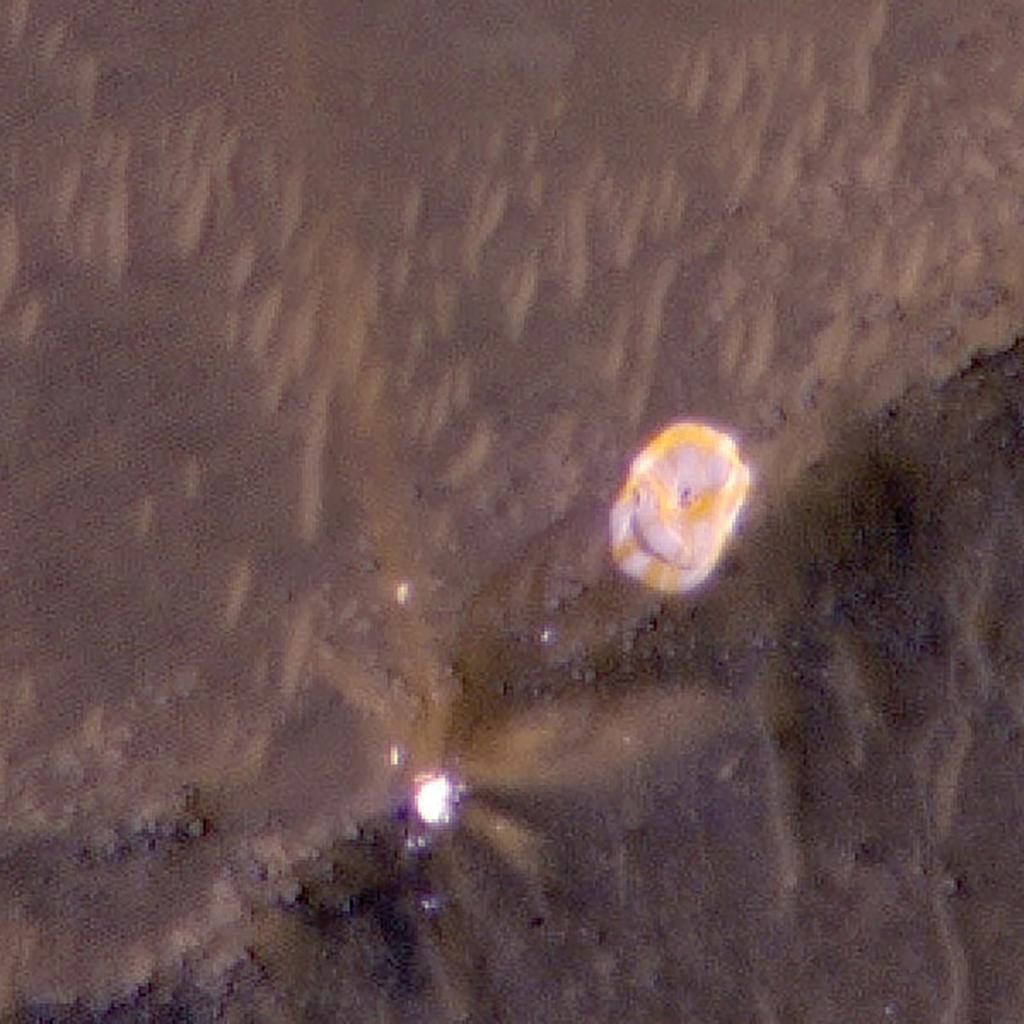
View From Orbit
As Perseverance wrapped up a seven-month, 293-million-mi. journey to Mars on Feb. 18, NASA’s Mars Reconnaissance Orbiter (MRO) soared over the Jezero Crater landing site to catch a bird’s-eye view of the rover’s landing. The next day, MRO’s High Resolution Imaging Experiment camera captured this image of the final location of Perseverance’s parachute. (Color added to include data from the infrared band of light.) The picture is a close-up version of a larger image showing other parts of the rover’s landing system, including the back shell, descent stage and heat shield. MRO is one of four Mars orbiters moonlighting as communications relay satellites for Perseverance.

Message in a Parachute
Perseverance’s 70.5-ft.-dia. supersonic parachute did more than help guide the rover to the surface of Mars on Feb. 18. Its orange-and-white canopy also contained a puzzle. “Sometimes we leave messages in our work for others to find,” Allen Chen, lead engineer for Perseverance’s entry, descent and landing team, said at a news conference the day after the landing. “We invite you all to give it a shot and show your work.”
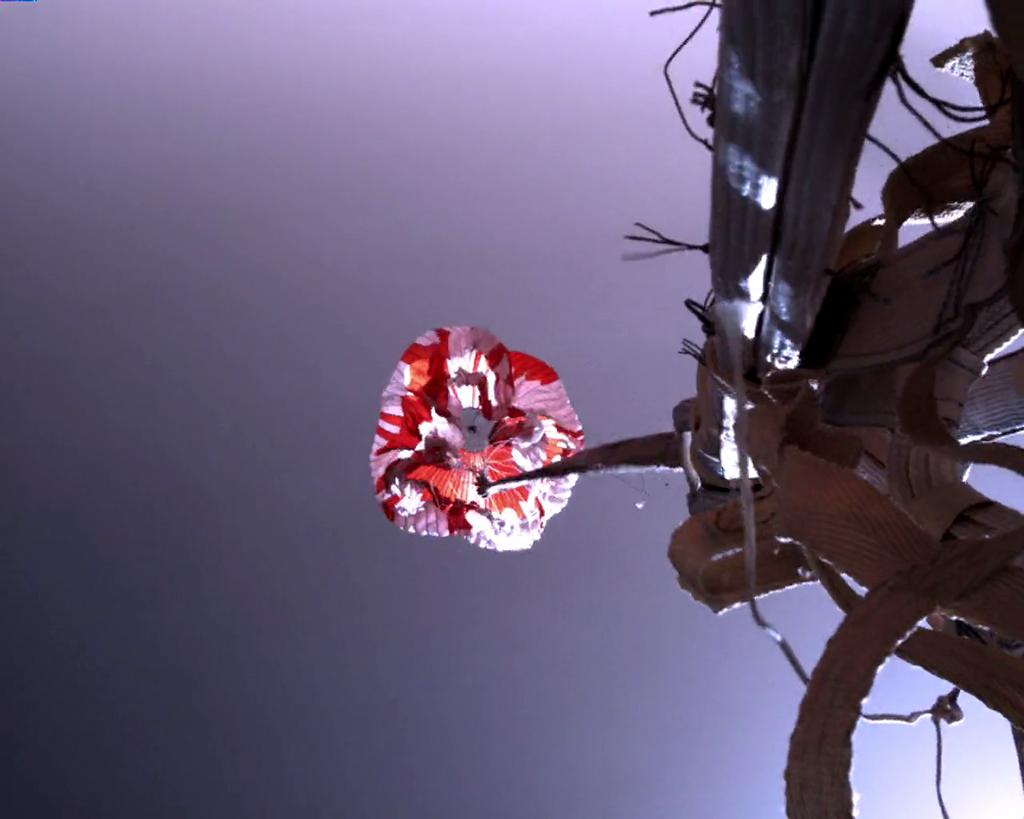
Two hours later, a father-son team cracked the code, posting on Twitter the message contained in the parachute. In binary code, the inner portion of the canopy spelled out “Dare Mighty Things”—the motto of NASA’s Jet Propulsion Laboratory (JPL), which built and operates the rover.
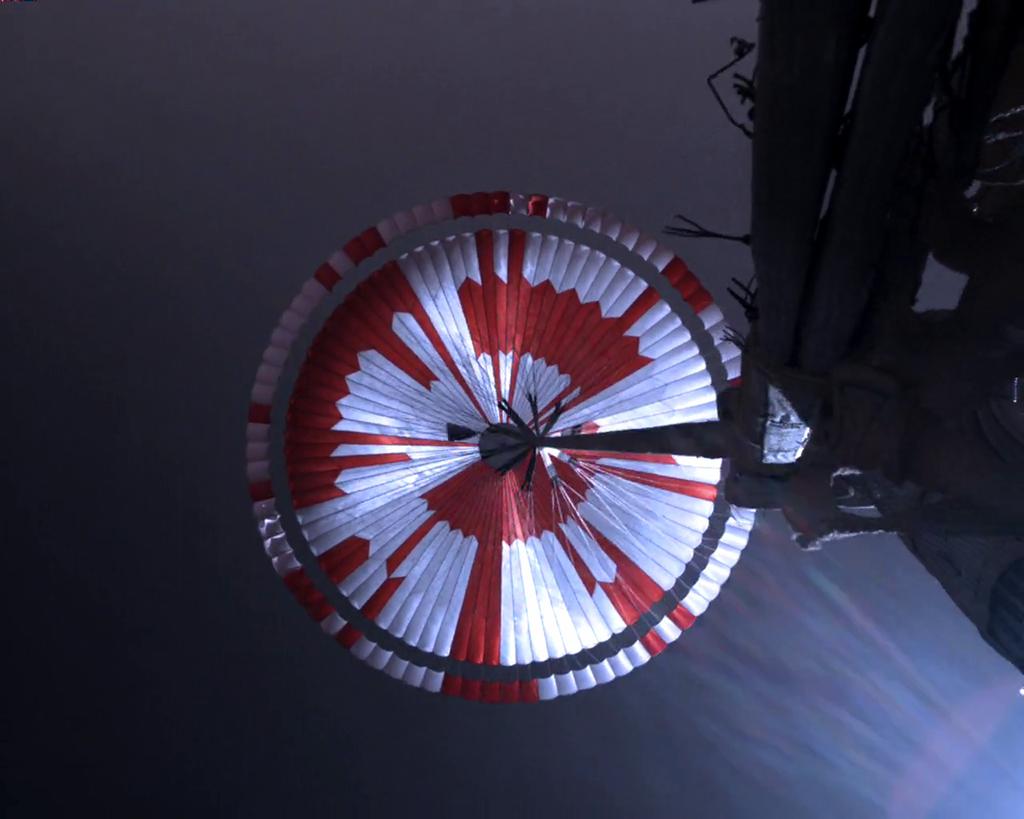
The expression comes from an 1899 speech, titled “The Strenuous Life” by then-New York Gov. Theodore Roosevelt. It reads in part: “Far better is it to dare mighty things, to win glorious triumphs, even though checkered by failure . . . than to rank with those poor spirits who neither enjoy nor suffer much, because they live in a gray twilight that knows not victory nor defeat.”

The outer band of Perseverance’s canopy contains the GPS coordinates for JPL in Pasadena, California.

Rover Family
Among the commemorative metal plates adorning Perseverance is a pictorial history of U.S. Mars rovers, including Sojourner, which landed in Ares Vallis in 1997; Mars Exploration Rovers Spirit and Opportunity, which landed in Gusev Crater and Meridiani Planum, respectively, in 2004; and Mars Science Laboratory Curiosity, which landed in 2012 in Gale Crater and remains operational. The fifth rover, Perseverance, which landed in Jezero Crater on Feb. 18, is joined by a small helicopter, named Ingenuity. Another metal plate indicates the location of silicon chips holding 11 million names of Mars exploration participants, adorned with the shining Sun. In the rays are hidden a Morse code message—“Explore as One.” Artwork also adorns one of Perseverance’s calibration targets.

How This Image Was Made
It took a team of six people two years to plan, test and execute more than 5,000 command parameters to take this first high-resolution panorama, just three days after Perseverance’s Feb. 18 landing in Jezero Crater. Key to the effort was software that simulates a rover in its Martian environment in 3D, similar to a video game. The software, called Viewpoint, “provides a way to visualize as if we were on Mars, and then we can lay down footprints,” says Elsa Jensen, with Malin Space Science Systems of San Diego, which designed and built the Perseverance Mastcam-Z camera system. Mastcam-Z is a 14-color, 3D stereo imaging system that can zoom from wide angle to telephoto. The red rectangles, pictured above, comprise 142 footprints that were stitched together to create the mosaic.

Jezero

Light-toned rocks, scoured by retrorockets during the rover’s descent, show some layering. Scientists have not yet determined if the rocks are volcanic, sedimentary or some combination of both. With its 14 color bands, Mastcam-Z will allow scientists to tease out differences in the terrain, identify layering in cliffs, discriminate differences and similarities between rocks and reveal features beyond human optical range.

Rocks right near the rover’s wheels show holes, or vesicles, that could be due to gas escaping from volcanic rock. “There are a number of different geological processes that can make holes in rock like that,” says Katie Stack Morgan, Perseverance deputy project scientist.
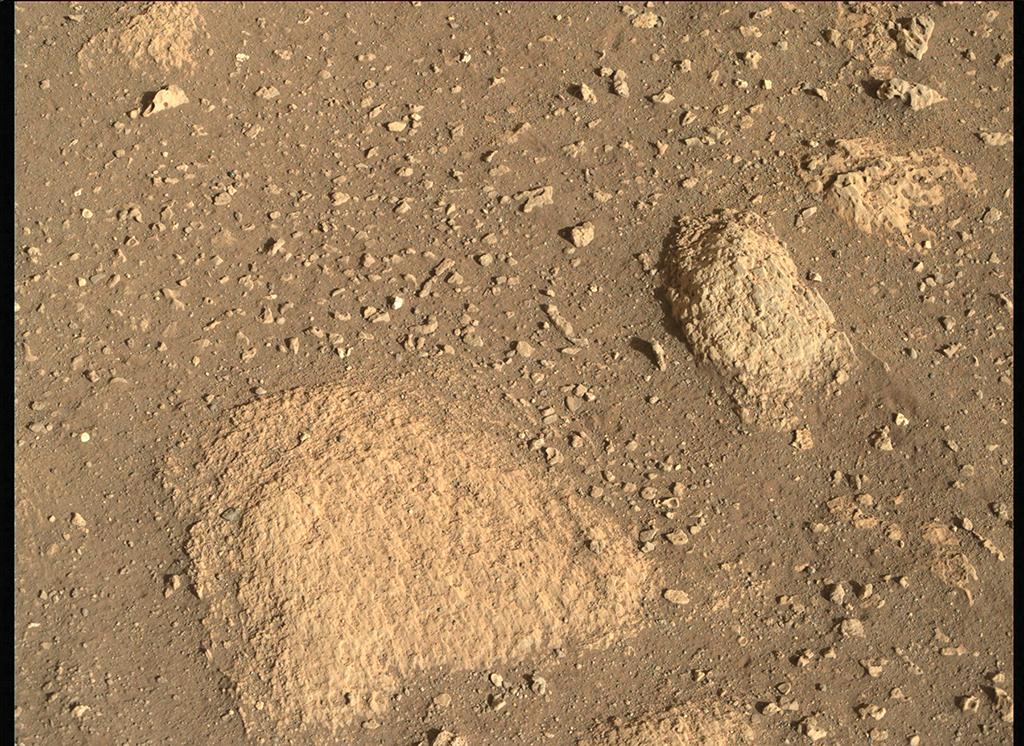

A highly eroded, wind-carved rock—informally referred to as the Harbor Seal (inset)—stands out in the first high-resolution panorama of the Perseverance landing site. “We’ve seen rocks like this at other Mars landing sites,” says Bell. “You’d think that sand grains gently moving across the surface wouldn’t do much erosion, but if you let them do that work for 2-3 billion years, you can create these just fantastic forms in the rocks.”
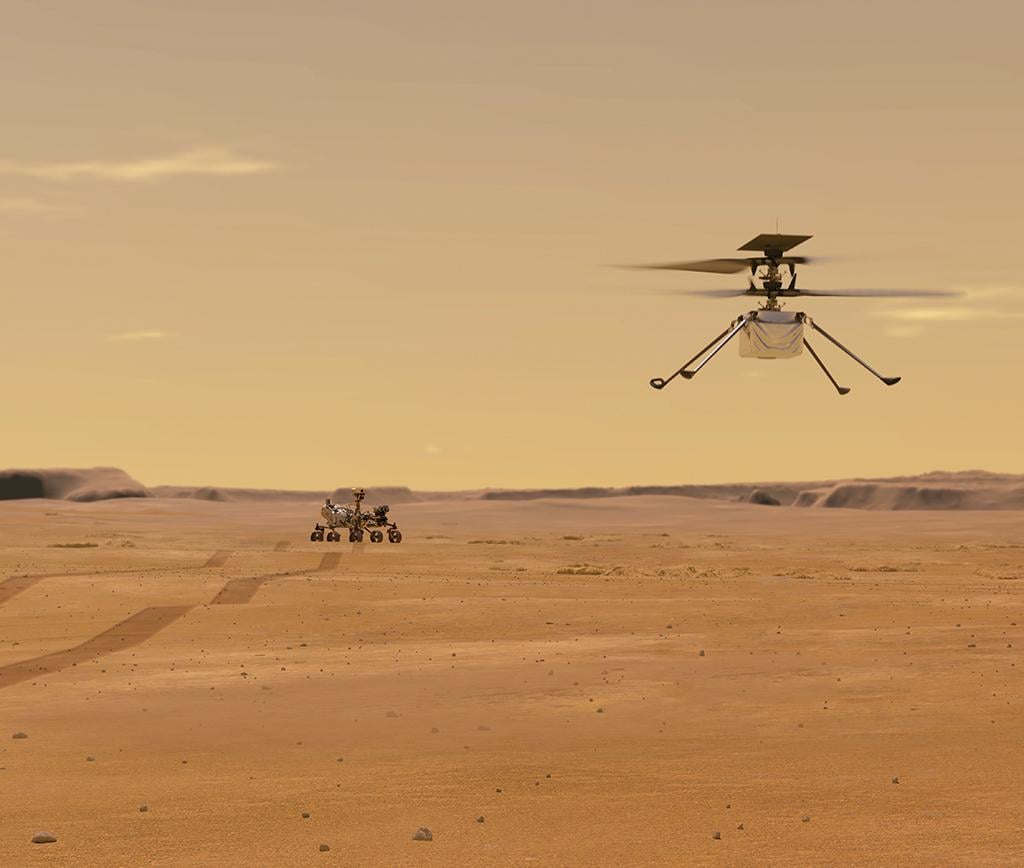
Next Up: Ingenuity
Hitching a ride with NASA’s Perseverance rover to Mars is a diminutive 4-lb. helicopter called Ingenuity that will attempt to make the first powered flight on another planet, a potential game changer for planetary exploration. “We’ve been working on a Mars helicopter for over six years,” says project manager MiMi Aung, with NASA’s Jet Propulsion Laboratory in Pasadena, California. “Our team finally gets the chance to learn how it works in the actual environment of Mars.” With the first pictures back from the rover’s landing site in Jezero Crater, engineers are scouting for a nearby flat site, called the helipad, to conduct a series of flight tests. Once delivered to the test site, Perseverance will drive off a safe distance, leaving Ingenuity on its own. The first trial will be to survive the frigid Mars night. “That will be a major milestone,” Aung says. “After that, we’ll execute a series of checkouts, and then we will perform that very important first flight.” If successful, up to four more flights will follow in the next 30 Martian days, or sols.
Six cameras collected more than 23,000 images as Perseverance descended and landed on Mars. Here is a small sample of images from the final leg of the rover’s journey to the planet and the images from its first days at Jezero Crater.
